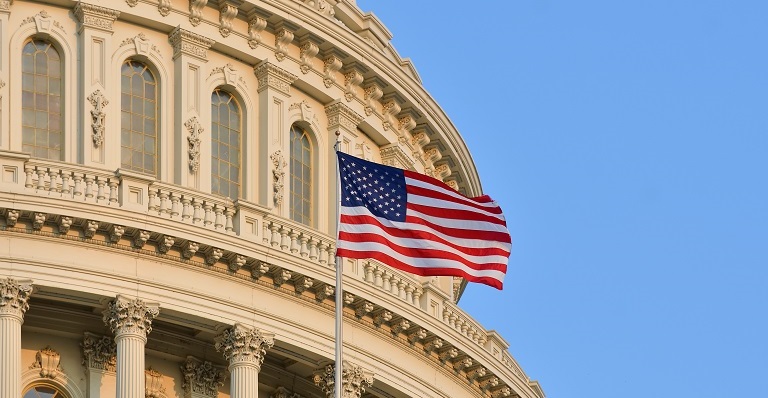Understanding Buy American versus Buy America
These acts impact mainly Canadian exporters operating in the U.S. construction and infrastructure sectors. They’re easily confused because of their similar names, but their effects can be very different.
- Buy American
The Buy American Act of 1933 applies to direct purchases by the federal government for public construction projects. It requires the federal government to procure only domestically produced materials unless a waiver has been granted.
However, Canadian goods exporters aren’t subject to Buy American requirements. The U.S. Trade Agreements Act waives these requirements for countries that are party to the WTO (World Trade Organization) Agreement on Government Procurement (GPA) and/or have a free trade agreement with the United States. Since Canada has the Canada-United States-Mexico Agreement (CUSMA) trade agreement, we fall squarely into that last category. In most cases, therefore, the Buy American Act will be a non-issue for Canadian exporters.
- Buy America
The Buy America Act is actually a subsection of the larger Surface Transportation Assistance Act of 1982. It applies to federal government-funded procurements for infrastructure-related projects, principally those involving highways, public transportation, airports, aviation and intercity passenger rail. Its requirements also apply to certain federally funded water-related infrastructure projects.
But the Buy America Act’s most significant feature, from the perspective of Canadian construction and infrastructure exporters, is that it doesn’t provide them with any automatic exemptions to its rules. In this regard, the Buy America Act differs sharply from the Buy American Act.
While Buy America doesn’t create new laws, it does provide a procurement framework for federal agencies to abide by. For example, Biden’s executive order refers to choosing domestic suppliers over foreign ones. Further restrictions are clearly outlined under the Infrastructure Act.
You should also check out
This EDC report offers an overview of the changes to U.S. government procurement and implications for Canadian companies.
Who’s at risk?
The Canadian exporters most at risk from the Buy America rules are companies that rely heavily on U.S. federal procurement. How damaging this will be to Canadians, in the longer term, is hard to determine.
This is partly because not all elements of the Biden executive order have been integrated yet into the new regulations. It’s also because of the advocacy efforts by international industry organizations, Global Affairs Canada and other Canadian and U.S. entities to educate U.S. procurement officials about U.S trade agreements such as CUSMA, and communicate the possible consequences of applying the Buy America rules too zealously.
Michael Gonsalves, EDC’s senior regional manager, United States, works out of EDC’s Atlanta office and is keeping a close eye on the Buy America situation. “For example,” says Gonsalves, “the United States has high aspirations for infrastructure and alternative energy. A number of large U.S. corporations are concerned about a looming supply shortage of the materials and components they’ll need for these projects. If U.S. manufacturers can’t meet their needs, they’ll be looking for suppliers abroad—and their first choice will likely be their trusted trade partners in Canada and Mexico. This may create pressure on U.S. federal procurement officials to grant waivers to the rules, so that supplies and services can be obtained from foreign sources—potentially benefiting Canadian exporters.”
What you can do if you’re affected
If you’re an exporter in the affected sectors, you may be able to avoid the impacts of Buy America by:
- obtaining waivers;
- setting up joint ventures;
- subcontracting to a U.S. company;
- engaging in projects that don’t use federal funds; or
- setting up a U.S. affiliate.
Obtaining waivers
Waivers are allowed where:
- The Buy America requirement for a particular project would be inconsistent with U.S. public interest
- The materials required aren’t produced in the U.S. in sufficient quantities and/or satisfactory quality
- The use of required domestic material over foreign material would increase the cost of the overall project by more than 25%
“However,” says Gonsalves, “obtaining a waiver can be an arduous, complex and transparent process. Since it can be so slow, it’s not necessarily the best strategy if you’re involved in a fast-moving project. But if you have the time (and the legal resources, if needed) to complete the process, a waiver can eliminate certain Buy America barriers for your export business.”
A second potential issue is that the waiver process is going to be made transparent and public. This level of disclosure can reveal what sort of business your company is doing, and how you’re positioning yourself to obtain the waiver. Disclosing such details may put you at a competitive disadvantage. It can also be politically sensitive, since it reveals that a non-American business is trying to obtain a foothold in a U.S. project. That much disclosure may not be something you’re willing to accept.
Setting up joint ventures or subcontracts
The U.S. federal government requires that procurements below US$250,000 be set aside for U.S. small businesses. There are a number of ways Canadian suppliers may participate in these contracts:
- Joint venture—small business: If you’re a small business under the size standards applicable to a procurement, you may form a joint venture with a small U.S. business to bid on a set aside contract.
- Joint venture—mentor: If you’re a large business, you may enter into a protégé-mentor joint venture with a small U.S. business to bid on a set aside contract. The mentor must provide technical or financial assistance to the protégé, while the protégé must be designated as the manager of the joint venture and perform at least 40% of the work. The small business must also own at least 51% of the joint venture entity.
- Subcontracting: The small business prime contractor (the U.S. company) may spend up to 50% of the value of a contract set aside for a small business on any other type of business.
Establishing a U.S. affiliate
Your Buy America issues will vanish if the work is done by a U.S.-based affiliate of your Canadian company. Setting up an affiliate is relatively straightforward in most U.S. jurisdictions, but you should do it with professional legal and accounting assistance. The major types of affiliates are corporations and limited liability companies (LLCs). Both are legal entities and can range in scope from a small office to a full-scale manufacturing operation.
“There are some other advantages to having a U.S. affiliate,” says EDC’s Christelle Shirandi, associate regional manager, United States, who also works at EDC’s Atlanta office.
“It may be eligible for significant investment tax credits and carrying out a merger or acquisition will be much easier if it’s done by a Canadian company’s U.S. affiliate. Also, an affiliate can put a Canadian company logistically closer to U.S. buyers and projects, which can be an advantage in a competitive environment, like the United States.”
How EDC can help you find and work with partners internationally
EDC has several solutions available to support Canadian companies in the expansion of their operations internationally. We provide market intelligence and international connections to partners. Our sector-focused teams have a range of knowledge and expertise. EDC can also provide any financial solutions in partnership with your Canadian bank or directly, by lending to the foreign subsidiary or to the Canadian parent.
Working on projects that aren’t federally funded
Keep in mind that Buy America affects only federal procurement contracts. But the U.S. is such a large market that there are many opportunities in municipal, state and corporate projects. If these projects aren’t being federally funded, Buy America presents no barriers.
In fact, because of the challenges and delays associated with obtaining federal money, many projects are funded instead by municipalities, states and banks. Such funding could serve as bridge financing, so the projects can proceed until the federal money is finally approved. These situations can present opportunities for Canadian companies that might otherwise be shut out by Buy America—if there’s no federal funding immediately involved in the project; Buy America doesn’t apply.
Where to go for help
There are several sources of help and information for exporters whose U.S. business may be affected by the Buy America Act. The major ones are as follows:
- EDC’s Export Help Hub
The Export Help Hub covers the globe and can connect you with EDC trade advisors who can answer your questions, help you understand your challenges and help you find solutions for them.
Within the Export Help Hub, there’s also the international business advisory section, which has two groups:
1. One specializes in markets and strategies.
2. The other covers regulations. The regulations group includes attorneys and accountants who are connected to U.S. government agencies and who thoroughly understand Buy America and the challenges it poses to Canadian exporters. They can help you assess your business strategy and, if it’s lacking in some areas, they can propose solutions.
Your first stop for help, if you’re encountering Buy America challenges, should be the Export Help Hub and its business advisory section.
- Canadian Trade Commissioner Service (TCS)
The Canadian Trade Commissioner Service is extremely active in Buy America issues. It offers a section on U.S. government procurement.
- Business Development Bank of Canada (BDC)
BDC provides advisory services for small- and medium-sized companies and can help you understand export regulations. Perhaps more important, it can also help you better understand your business, so you can make better use of resources such as EDC’s Export Help Hub.
- U.S. Made In America Office
Biden’s executive order established a new Made in America Office to oversee and administer domestic preference requirements in federal procurement. Among other things, it reviews and approves waivers of Made in America laws, including, waivers of the Buy American Act. It also includes links to other resources related to doing business with the U.S. government.






